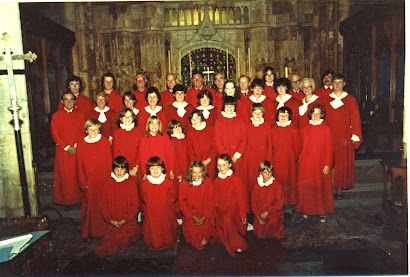Osred was king of Northumbria and died in 716 AD . There is nothing more known of Osana beyond this mention but it does suggest evidence of an early church at Howden.
We are on more certain ground with the knowledge that the church was mentioned in the Domesday Book of 1086 and eventually, when Howden became associated with the bishopric of Durham it became very important.
In 1267 the church became collegiate - ie a college of priests was set up and thereafter much building took place until a magnificent church, with a beautiful chapter house and its own song school dominated the landscape. Around 20 priests lived in Howden, some in separate prebendal residences on Churchside and some in the bedern [like a sort of hall of residence] which was where Parson's Lane is now. And there were too regular visits by the bishops to Howden when they stayed in their palace and where at least two kings [ Edward II in 1312 and Henry V in 1421] were hosted
The church became a place of pilgrimage after a supposed miracle took place at the funeral Mass of John of Howden in 1275 when he apparently sat up in his coffin to receive the Host. He was an eminent poet and philosopher and had been chaplain to Queen Eleanor of Provence, the wife of Henry III
Although never officially created at saint he was held to be one and of course St John Street leads directly to the Minster. His shrine was in the centre of what is now the ruined choir
So many pilgrims visited Howden that enough money became available to build a new choir and raise the height of the nave. We can still see the old roof lines both from the Market Place and inside the church.
 |
| View from the Market Place showing the ruined choir and the older roofline |
Many repairs were made to the church in the nineteenth century and then in 1929 a disgruntled farm worker set the tower on fire. A lot of damage was done both by the fire and by the water used to extinguish it by the firemen. The alarm was said to be have been given by a sea lion from a circus parked in the Market Place. It took three years for the repairs to be complete.
 |
| The dramatic and awful sight of the tower on fire in 1929 |
There is lots to see inside the church today, some lovely stained glass and statues as well as memorials to many Howden families. And do not forget to visit Peter de Saltmarshe, lying in his armour in the centre of the Saltmarshe chapel with a dog at his feet to symbolise loyalty.
 |
This is a picture of the Minster choir in 1982. |
No comments:
Post a Comment